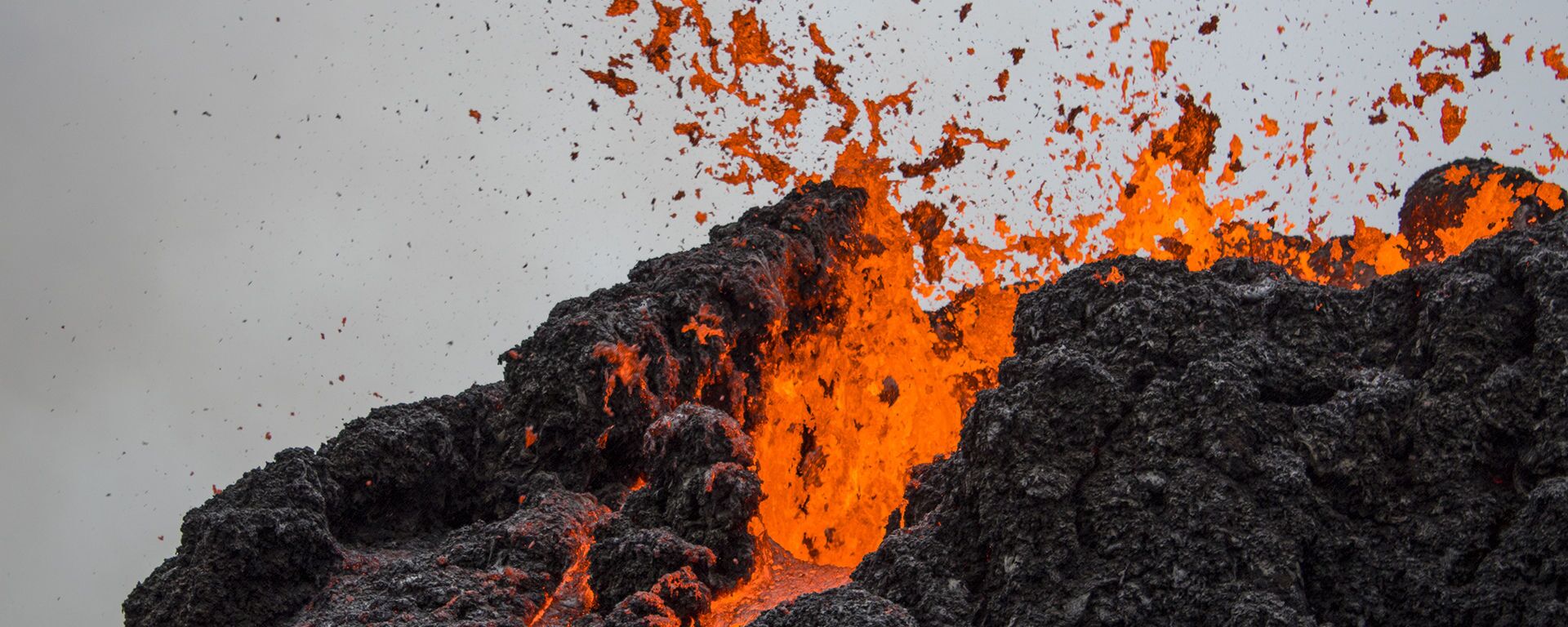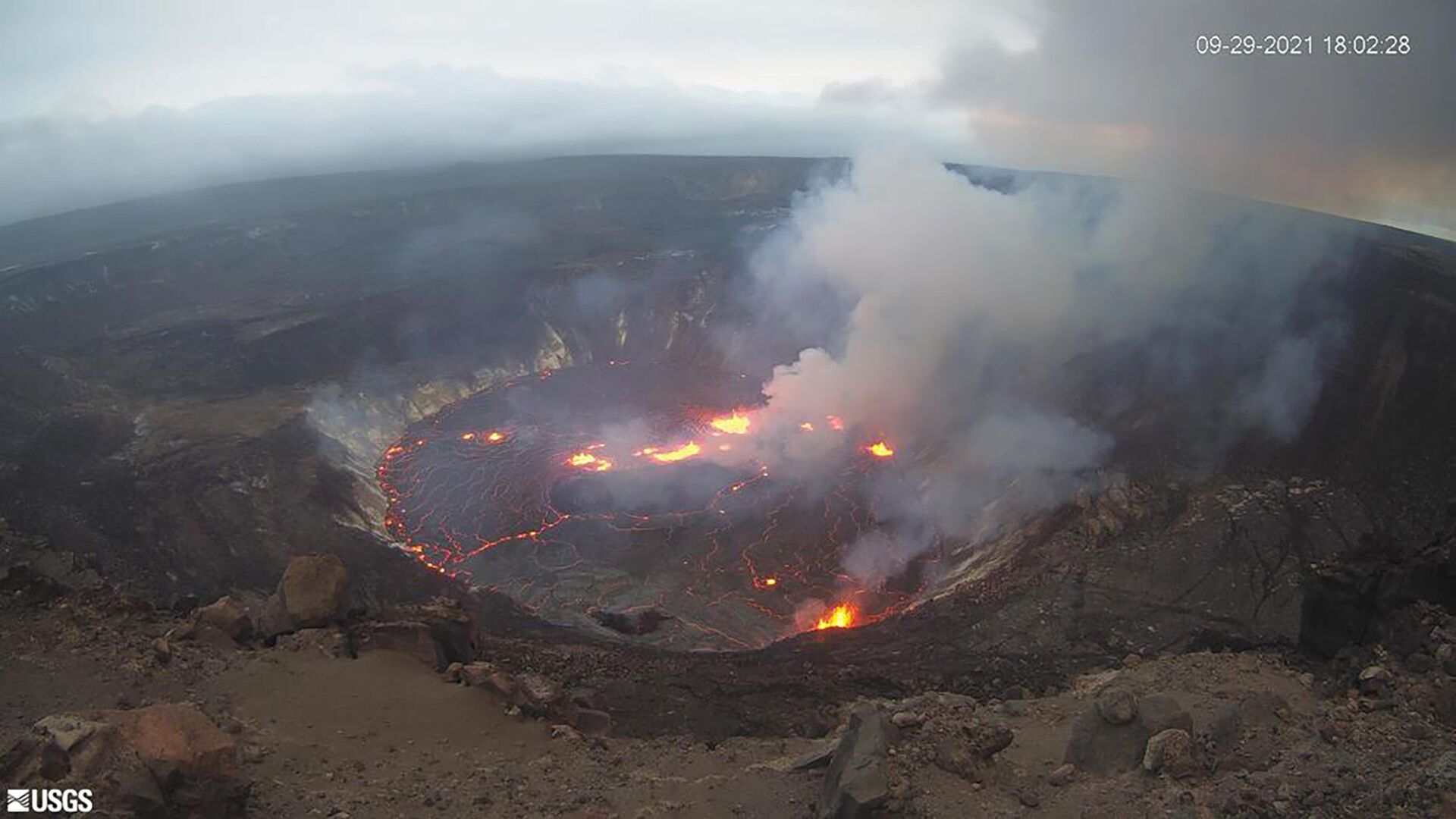https://sputnikglobe.com/20231230/apocalyptic-tonga-volcano-eruption-fueled-by-merging-undersea-magma--1115887492.html
Apocalyptic Tonga Volcano Eruption Fueled by Merging Undersea Magma
Apocalyptic Tonga Volcano Eruption Fueled by Merging Undersea Magma
Sputnik International
It’s believed the volcanic eruption rivaled the strength of the US’ largest nuclear detonation, 1954’s Castle Bravo, at 15 megatons.
2023-12-30T04:33+0000
2023-12-30T04:33+0000
2023-12-30T04:33+0000
beyond politics
volcano
volcano eruption
tonga
natural disaster
volcanic island
volcanic ash
https://cdn1.img.sputnikglobe.com/img/07e5/09/1e/1089542918_0:0:2000:1125_1920x0_80_0_0_0b8f474ca686b3147ed4531ec26f3efd.jpg
A massive volcano eruption in the South Pacific country of Tonga last year created near-apocalyptic conditions, generating a tsunami the size of a skyscraper and the most severe lightning storm ever recorded. Now scientists are offering new insights about what took place in January 2022 in the island nation north of New Zealand.According to a study published this month, three undersea chambers of magma sit below Tonga's Hunga volcano at depths between 6,600 and 33,000 feet. Researchers believe the explosion of magma from the shallower central reservoir created a change in pressure, causing magma in a deeper chamber to the north to break through the crust and enter the shallower chamber. A channel was opened up between the reservoirs, increasing the size of the explosion.Scientists believe magma from a deeper area filled with gas may have also broken through, making the explosion even more violent.The eruption was record-setting in a number of ways. Scientists say the “mega tsunami” generated by the blast is the first one documented since ancient times, with its wave reaching 30 stories high. The atmospheric changes generated by the explosion created the biggest lightning storm ever observed.Researchers say the eruption was the most powerful natural explosion in more than 100 years and the most severe one on Tonga’s Hunga Tonga and Hunga Ha'apai islands for 900 years. The two islands merged after a smaller volcanic eruption in 2015, but the 2022 blast caused a cave-in that severed them once again.The volcanic plume from the explosion was the highest ever recorded, reaching 35 miles or 57 kilometers into the sky.Scientists were able to draw conclusions about the eruption by mapping small variations in the pull of gravity in nearby waters, enabling them to envision the various caverns of magma beneath the ocean.He noted this kind of observation “is rarely done to study submarine volcanoes.”
https://sputnikglobe.com/20231115/icelands-looming-eruption-linked-to-volcanic-pulses-dating-back-hundreds-of-years-1114963228.html
https://sputnikglobe.com/20221202/lava-flow-in-hawaii-threatens-health-of-residents--islands-main-highway-1104951873.html
tonga
Sputnik International
feedback@sputniknews.com
+74956456601
MIA „Rossiya Segodnya“
2023
Sputnik International
feedback@sputniknews.com
+74956456601
MIA „Rossiya Segodnya“
News
en_EN
Sputnik International
feedback@sputniknews.com
+74956456601
MIA „Rossiya Segodnya“
Sputnik International
feedback@sputniknews.com
+74956456601
MIA „Rossiya Segodnya“
magma, lava, volcano eruption, natural disaster, tsunamu, massive volcano eruption, massive eruption, volcanic eruption, hunga tonga-hunga ha'apai, tonga-hunga, undersea magma
magma, lava, volcano eruption, natural disaster, tsunamu, massive volcano eruption, massive eruption, volcanic eruption, hunga tonga-hunga ha'apai, tonga-hunga, undersea magma
Apocalyptic Tonga Volcano Eruption Fueled by Merging Undersea Magma
It’s believed the volcanic eruption rivaled the strength of the US’ largest nuclear detonation, 1954’s Castle Bravo, at 15 megatons.
A massive volcano eruption in the South Pacific country of Tonga last year created near-apocalyptic conditions, generating a tsunami the size of a skyscraper and the most severe lightning storm ever recorded. Now scientists are offering new
insights about what took place in January 2022 in the island nation north of New Zealand.
According to a study published this month, three undersea chambers of magma sit below Tonga's Hunga volcano at depths between 6,600 and 33,000 feet. Researchers believe the explosion of magma from the shallower central reservoir created a change in pressure, causing magma in a deeper chamber to the north to break through the crust and enter the shallower chamber. A channel was opened up between the reservoirs, increasing the size of the explosion.
Scientists believe magma from a deeper area filled with gas may have also broken through, making the explosion even more violent.

15 November 2023, 00:07 GMT
The eruption was record-setting in a number of ways. Scientists say the “mega tsunami” generated by the blast is the first one documented since ancient times, with its wave reaching 30 stories high. The atmospheric changes generated by the explosion created the biggest lightning storm ever observed.
Researchers say the eruption was the most
powerful natural explosion in more than 100 years and the most severe one on Tonga’s Hunga Tonga and Hunga Ha'apai islands for 900 years. The two islands merged after a smaller volcanic eruption in 2015, but the 2022 blast caused a cave-in that severed them once again.
The volcanic plume from the explosion was the highest ever recorded, reaching 35 miles or 57 kilometers into the sky.

2 December 2022, 03:40 GMT
Scientists were able to draw conclusions about the eruption by mapping small variations in the pull of gravity in nearby waters, enabling them to envision the various caverns of magma beneath the ocean.
“I was happily surprised that we can indeed image a relatively large magmatic system using this kind of dataset and method,” said Hélène Le Mével, the lead author of the study. Le Mével is a volcanologist who studies at the Carnegie Institution for Science in Washington D.C.
He noted this kind of observation “is rarely done to study submarine volcanoes.”




